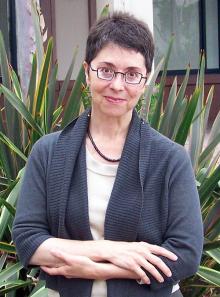


Three UC Santa Barbara anthropologists have published new books, each of which examines some aspect of how political and economic changes impact identity and culture. The books include "The Politics of Heritage from Madras to Chennai," "Building the Borderlands: A Transnational History of Irrigated Cotton Along the Mexico-Texas Border," and "The Archaeology of Everyday Life at Early Moundville."
In "The Politics of Heritage from Madras to Chennai" (Indiana University Press, 2008), Mary Hancock, a professor of anthropology and of history, explores the spaces of public memory in the southern Indian city of Chennai, a former colonial port now poised to become a center for India's new economy of information technology, export processing, and back-office services. She grapples with the questions of how people in Chennai remember and represent their history, and with the political and economic contexts and implications of those memory practices.
State and municipal authorities have launched new efforts to create a hospitable climate for investment and consumption in Chennai, not only through regulatory changes but also by improving the tourism and infrastructure to make the city a recognizable brand. Working from specific sites, including a historic district created around an ancient Hindu temple, a living history museum, neo-traditional and vernacular architecture, and political memorials, Hancock examines the spatialization of memory under the conditions of neoliberalism. She considers the ways that the state authorizes some aspects of south India's past but also documents the strategies with which diverse and competing publics reclaim and remake the past to create an urban present.
In "Building the Borderlands: A Transnational History of Irrigated Cotton Along the Mexico-Texas Border" (Texas A&M University, 2008), Casey Walsh, an assistant professor of anthropology, investigates the ways cotton, which is crucial to the economy of the American South, also played a vital role in the development of northern Mexico.
In the 1930's, the government of Lázaro Cárdenas decided to make the Lower Río Bravo Valley zone, located on the Texas border, a centerpiece of a national development effort, with the goal of making cotton the basis of the national economy. Settled by Mexican Americans repatriated from Texas, this irrigation district became a thriving and socially diverse agricultural zone. Drawing on previously unexplored archival sources and oral histories, Walsh sheds light on the relations among the different ethnic and class groups involved in cotton production in the borderlands. He reveals the short- and long-term environmental impacts of economic development in this region.
Describing the complex relationships among these groups, Walsh shows the mutual influences between capitalist economic ventures and government institutions in both Mexico and the United States. His study links economic and environmental processes by illuminating the development and shape of transnational economic forces in the two countries. He does this through a historical account of how agricultural and water issues have shaped the borderlands.
Puzzling over the massive platform mounds created between 1000 and 1500 A.D. in the midwestern and southeastern United States, archaeologists have speculated about the ceremonial purposes these mounds may have fulfilled. In his book "The Archaeology of Everyday Life at Early Moundville" (University of Alabama Press, 2008), Gregory Wilson, an assistant professor of anthropology, offers a new account of this important period, based on the archaeology of everyday life in these mound-building societies.
Investigation of the household remains found on these sites reveals that the Moundville community consisted of numerous spatially discrete multi-household groups, similar to those of 17th- and early 18th-century Native American communities in the southeastern United States. Through an analysis of Moundville's residential occupation patterns, Wilson shows how kin groups defined and redefined their corporate status and identities over the long term, suggesting how the dynamics of power and inequality in everyday life contributed to enduring cultural changes and increasing social complexity in prehistoric North America.
Related Links



